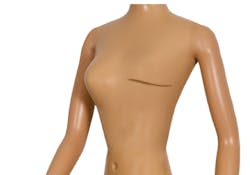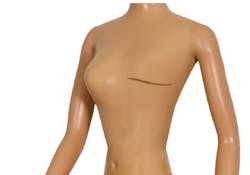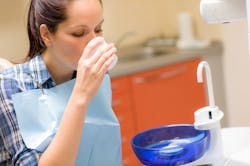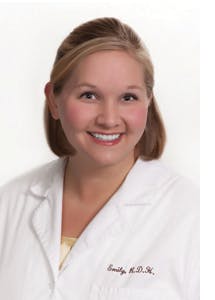Ask Emily: Treating breast cancer patients, buying a gift for your boss, and using pre-procedural rinse
By Emily Boge, RDH
December 17, 2013
Dear Emily,
Last week I had a patient who survived breast cancer, but unfortunately had a full mastectomy of the left breast. The patient stated her oncologist recommends she not have her blood pressure taken on the left side. As standard operating procedure, our office takes blood pressure on the left arm once a year. I took hers on the right arm, and recorded the data in the chart. What is the reason for not recording blood pressure after a mastectomy on that side of the body? What should I do if I encounter a case of a double mastectomy patient?
-Elizabeth
5 ways to damage your dental hygiene career
Dear Elizabeth,
Kudos to you and your dental team for providing screening blood pressures as a service to your patients and recognizing total body wellness at the preventive dental appointment!
According to Johns Hopkins University, patients who have had a full mastectomy often have a lot of lymphatic tissue removed at the same time. This lymphatic tissue removal can affect the way lymphatic fluid drains from the arm, and constrictive equipment, clothing, or jewelry worn from the shoulder down can put the patient at an increased risk for lymphedema (the accumulation of lymph fluid, resulting in abnormal swelling of the arms, legs, and other parts of the body). Lifelong precautions should be taken to insure the mastectomy side stays safe. Some of these precautions include avoiding needle sticks or IV insertions, having blood pressure taken on the opposing arm, and avoiding strain or injury to the arm by following doctors’ recommendations on exercise and heavy lifting. Every patient is different, but knowing the standard protocol is important. There is conflicting research as to the degree of lymphedema risk and the time frame patients need to be concerned about lymphedema following the mastectomy, but it is better to err on the side of caution and simply take it on the other side.
In the case of a double mastectomy, many health providers prefer to take blood pressure on the calf of the leg. I know this may pose an inconvenience in the dental office, but the patients who have undergone a double mastectomy will appreciate the time you take to do it.
Dear Emily,
I was wondering if it is appropriate to purchase a holiday gift for my boss. If so, what are some ideas of what to buy for my boss?
Katelyn
Transforming dental hygiene education: The future of the dental hygiene profession
Hi Katelyn,
I love giving gifts, but I realize the culture for each office can vary. In my opinion, gift giving and gestures of appreciation should be given when the spirit moves you. At my office, each employee donates money to purchase gifts for the three owners of the practice. This works well for us. I encourage you to ask co-workers to go together on a gift, but if they are not interested, please do not let it stop you from getting something on your own.
That being said, ideas for gifts are a little bit more of a challenge. Although you want the gift to be meaningful, getting a very personal gift could embarrass your boss. The easiest place to start is by finding out what the recipient of the gift enjoys. For instance, maybe your boss loves to golf. In that case, a gift certificate to a local pro-shop or golf course for green fees may be appropriate. Perhaps your boss is a foodie. A gift certificate to a nice restaurant, or some fancy infused olive oil might make him or her happy. Low on cash? Make a homemade gift such as holiday candies or scarf. The dollar value is not important. As cheesy as it may sound, it really is the thought that counts.
Dear Emily,
Several product reps have been in over the last few months touting the benefits of pre-procedural rinse. What are your feelings on rinsing before completing dental hygiene procedures?
Amanda
Greetings Amanda,
It seems the antimicrobial rinse market has exploded in recent years. Every company has their rinse that they feel is the best thing to use as a pre-procedural rinse. I agree that remembering the active ingredients in each of these rinses is tough, and that’s without comparing the studies done on each (another daunting task in itself!). Research from the CDC (in addition to independent research) has shown low risk of acquiring an infection through aerosol inhalation when a mask is worn correctly, yet many offices have begun making a 30-second swish rinses prior to hygiene care a standard operating procedure.
If your office chooses to use a pre-procedural rinse, I encourage you to do your homework. Find a rinse that has efficacy in killing germs such as one containing cetylpyridinium chloride (CPC), chlorhexidine Gluconate (CHX), or essential oils (eucalyptol, menthol, and thymol). Using a rinse without efficacy does not make sense to me. My rinse of choice is an alcohol-free CHX rinse for all periodontal patients, yet I do encourage you to do your research and make a choice that is right for your patients.
________________________________________________________________________________________________
More Ask Emily columns:
- Ultrasonic, loupes, and calling a patient's MD
- BHT, fluoride options, and parents at pediatric appointments
- Why patients forgo X-rays, why you should stir the pot on infection control, and how dental hygiene school is a lot harder than anticipated
________________________________________________________________________________________________




